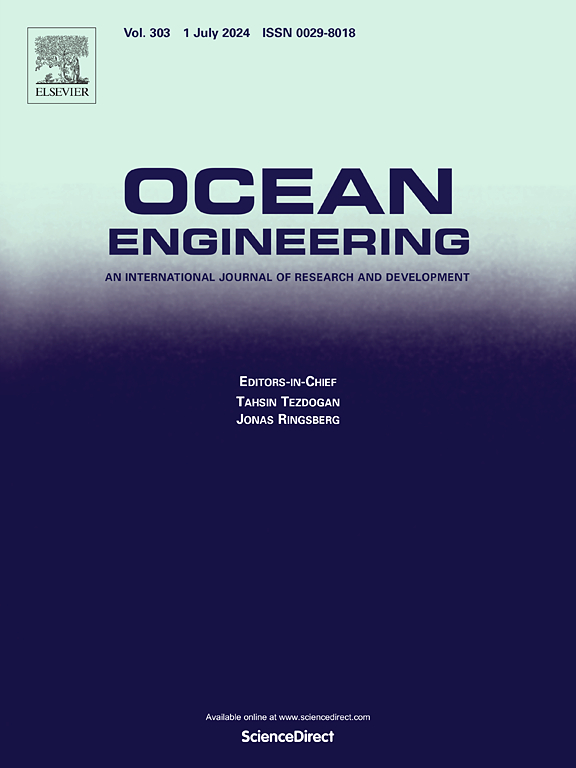海带养殖场波浪衰减能力的实验研究
IF 5.5
2区 工程技术
Q1 ENGINEERING, CIVIL
引用次数: 0
摘要
海带养殖场在碳封存和可持续水产养殖方面具有巨大的潜力,需要对其波浪相互作用的透彻理解来优化设计。本研究利用聚氯乙烯板制作的物理模型,在几何相似的情况下复制日本糖藻的力学特性,通过波浪水槽实验来研究海带养殖场的波浪衰减。分析了波浪周期、波浪高度、海带叶片高度、行距、淹没深度和波浪传播方向上的养殖场长度6个因素。波的透射系数kt用来量化波的衰减。结果表明,海带养殖场的kt随规则波周期的延长而增加,随不规则波周期的延长而减少。对于两种波型,kt均随波高、叶高和农场长度的增加而减小,但随行间距的增加而增大。淹没深度的影响各不相同,表明根据海带生长阶段进行调整。通过量纲分析,导出了包含衰减阻尼系数(α)的经验公式,在预测波浪衰减方面具有较高的精度(R2 = 0.80,不规则波= 0.85)。这支持了海带养殖场的设计,以增强沿海生态系统中的波浪耗散。本文章由计算机程序翻译,如有差异,请以英文原文为准。
Experimental investigation on wave attenuation capacity of kelp farms
Kelp farms hold significant potential for carbon sequestration and sustainable aquaculture, requiring a thorough understanding of their wave interactions to optimize design. This study investigates wave attenuation by kelp farms through wave flume experiments using a physical model crafted from PVC sheets, replicating the mechanical properties of Saccharina japonica under geometric similarity. Six factors are analyzed: wave period, wave height, kelp blade height, row spacing, submergence depth, and farm length along the wave propagation direction. The wave transmission coefficient (kt) is employed to quantify wave attenuation. Results indicate that kt of the kelp farm increases with longer periods of regular waves but decreases with longer periods of irregular waves. For both wave types, kt decreases with the increase of wave height, blade height, and farm length, but increases with the increase of row spacing. Submergence depth effects varied, suggesting adjustments based on kelp growth stages. An empirical formula incorporating the attenuation damping coefficient (α), derived through dimensional analysis, provides high accuracy (R2 = 0.80 for regular waves, 0.85 for irregular waves) in predicting wave attenuation. This supports the design of kelp farms to enhance wave dissipation in coastal ecosystems.
求助全文
通过发布文献求助,成功后即可免费获取论文全文。
去求助
来源期刊

Ocean Engineering
工程技术-工程:大洋
CiteScore
7.30
自引率
34.00%
发文量
2379
审稿时长
8.1 months
期刊介绍:
Ocean Engineering provides a medium for the publication of original research and development work in the field of ocean engineering. Ocean Engineering seeks papers in the following topics.
 求助内容:
求助内容: 应助结果提醒方式:
应助结果提醒方式:


